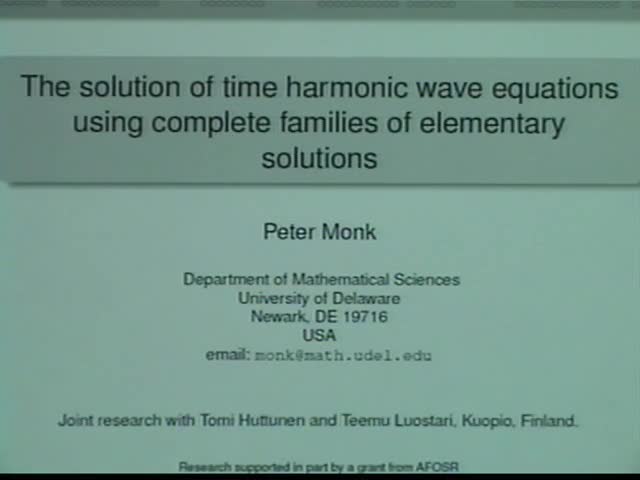The solution of time harmonic wave equations using complete families of elementary solutions
November 1, 2010
Keywords:
- Wave equation
MSC:
- 35L05
Abstract
This presentation is devoted to plane wave methods for approximating the time-harmonic wave equation paying particular attention to the Ultra Weak Variational Formulation (UWVF). This method is essentially an upwind Discontinuous Galerkin (DG) method in which the approximating basis functions are special traces of solutions of the underlying wave equation. In the classical UWVF, due to Cessenat and Després, sums of plane wave solutions are used element by element to approximate the global solution. For these basis functions, convergence analysis and considerable computational experience shows that, under mesh refinement, the method exhibits a high order of convergence depending on the number of plane wave used on each element. Convergence can also be achieved by increasing the number of basis functions on a fixed mesh (or a combination of the two strategies). However ill-conditioning arising from the plane wave basis can ultimately destroy convergence. This is particularly a problem near a reentrant corner where we expect to need to refine the mesh.
The presentation will start with a summary of the UWVF and some typical analytical and numerical results for the Hemholtz equation. An alternative to plane waves, is to use polynomial basis functions on small elements. Using mixed finite element methods, we can view the UWVF as a hybridization strategy and I shall also present theoretical and numerical results for this approach.
Although neither the Bessel function or the plane wave UWVF are free of dispersion error (pollution error) they can provide a method that can use large elements and small number of degrees of freedom per wavelength to approximate the solution. It has been extended to Maxwell's equations and elasticity. Perhaps the main open problems are how to improve on the bi-conjugate gradient method that is currently used to solve the linear system, and how to adaptively refine the approximation scheme.
